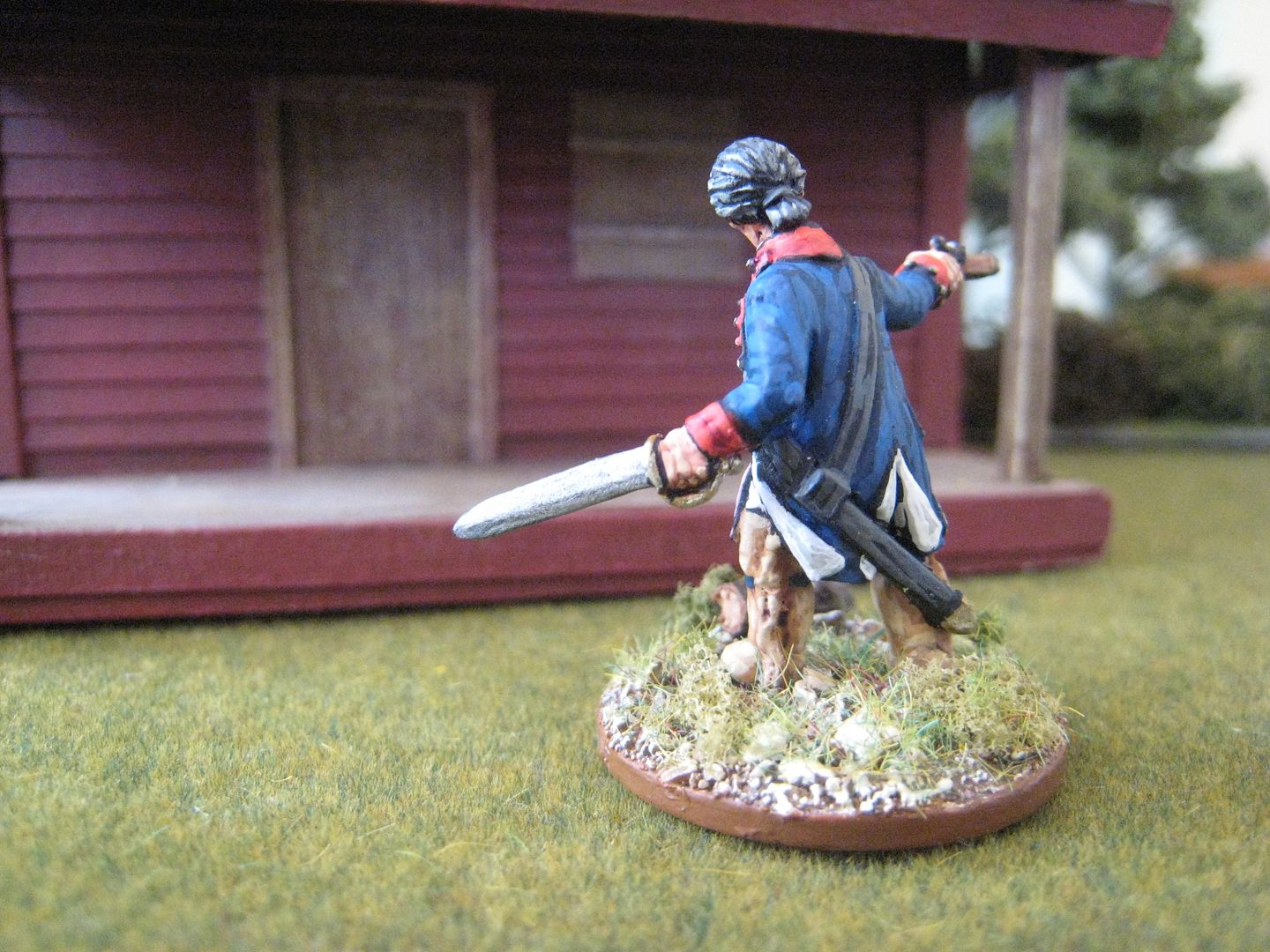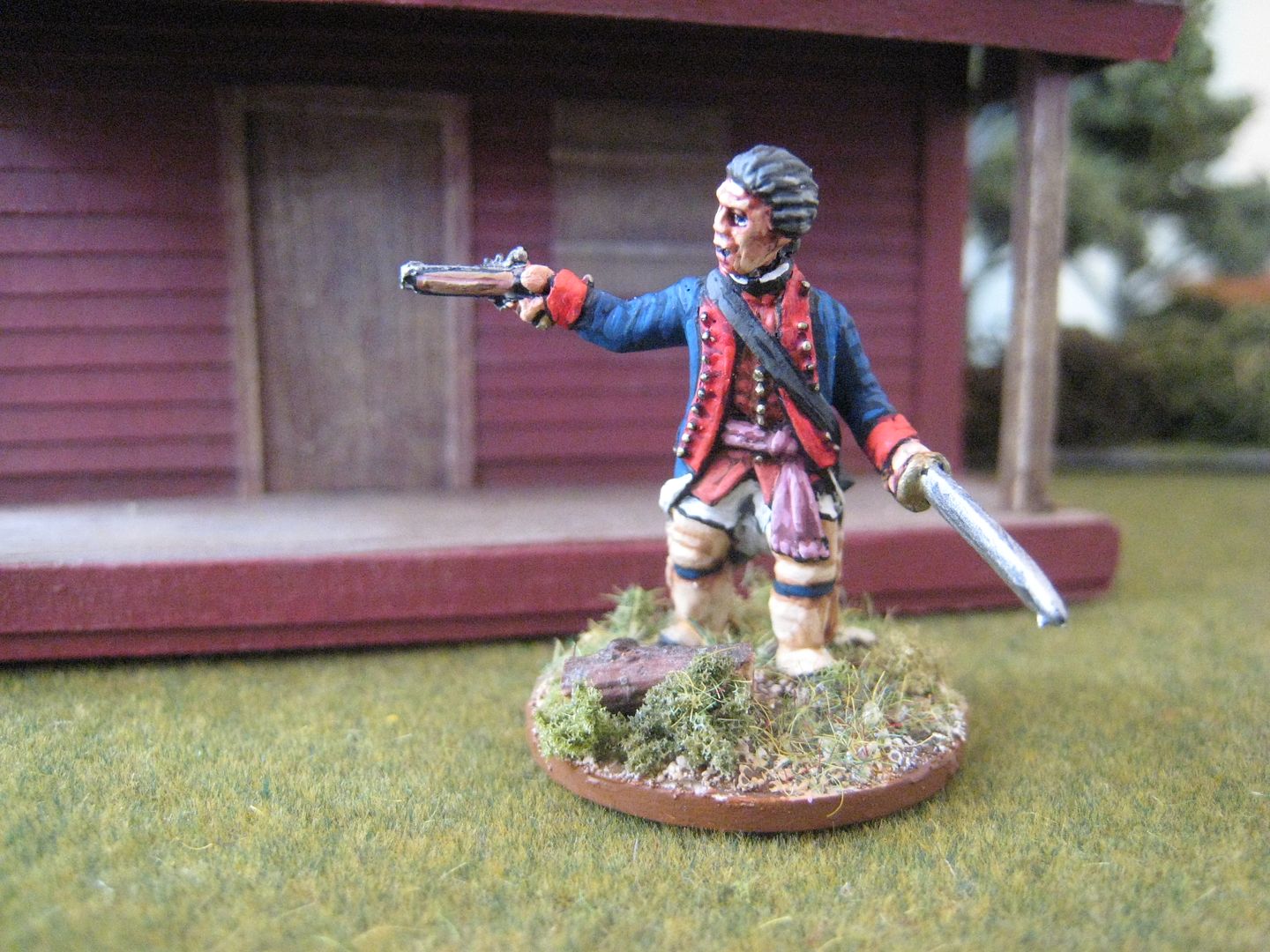Shortly after the ambush began Herkimer's horse was shot and he himself was badly wounded in the leg. He propped himself up against a tree and continued to direct the battle as best as he could. The Indians had sprung the trap too early and the rear elements of Herkimer's column fled. Those who remained faced what must have been a horrific hand-to-hand battle. A common tactic of the Indians was to wait for the flash of a musket before rushing to attack with hand-held weapons before the firer had time to re-load. However, the Americans were able to rally and fight their way back down the ravine to higher ground. Herkimer was able to organise a more effective and co-ordinated withdrawal and the remains of his force were able to disengage and retreat back to Fort Dayton. The battle was very cost for the American side, which lost approximately 450 casualties against 150 dead and wounded Loyalists and Indians. Herkimer's wound was attended to, but his leg because infected and the decision to amputate was taken too late. The operation took place 10 days after the battle and was not successful. Herkimer died on 16 August, aged 49.
 This figure continues the Mohawk frontier theme of last post's Magua. I put this figure together from King's Mountain Miniatures' "officer firing pistol" (code OMM-009) with one of the heads from OMM-07. I had intended this figure to be the officer for a unit of loyalist rangers I was painting for the Oriskany orbat (see next post), but I decided the uniform coat was too long. I put the figure to one side, but then realised it would be perfect for an American officer, so why not Herkimer himself. His leg was shattered early in the fight, but let's not let that get in the way of having a nice figure on the table, and I thought the pose looked suitably desperate. As with Magua, I used a picture for reference material. Above is the painting "Herkimer at the Battle of Oriskany" by F C Yohn, from circa 1901. My sources aren't consistent on what uniform a brigadier-general would have worn this early in the war. By 1780 the official uniform for this rank in the Continental Army was dark blue faced buff, but I have seen some references to dark blue faced red for early war officers. And of course Herkimer was militia, not Continental Army. Yohn may have worked from a dark blue faced red uniform coat that was worn by the commander of Fort Stanwix, Colonel Peter Gansevoort who was promoted Brigadier in the militia later in the war. So I decided to stick with red facings rather than buff - it just looked more militia-ish. (I've started a new label with this post - "Personalities". This will capture the "real life" people in my collection, as opposed to generic command figures or fictional characters like Magua and Hawkeye. There are other personalities in my collection not as yet featured on TQ - the British generals, for example, and Tarleton himself. Hopefully I'll add those in due course.)
This figure continues the Mohawk frontier theme of last post's Magua. I put this figure together from King's Mountain Miniatures' "officer firing pistol" (code OMM-009) with one of the heads from OMM-07. I had intended this figure to be the officer for a unit of loyalist rangers I was painting for the Oriskany orbat (see next post), but I decided the uniform coat was too long. I put the figure to one side, but then realised it would be perfect for an American officer, so why not Herkimer himself. His leg was shattered early in the fight, but let's not let that get in the way of having a nice figure on the table, and I thought the pose looked suitably desperate. As with Magua, I used a picture for reference material. Above is the painting "Herkimer at the Battle of Oriskany" by F C Yohn, from circa 1901. My sources aren't consistent on what uniform a brigadier-general would have worn this early in the war. By 1780 the official uniform for this rank in the Continental Army was dark blue faced buff, but I have seen some references to dark blue faced red for early war officers. And of course Herkimer was militia, not Continental Army. Yohn may have worked from a dark blue faced red uniform coat that was worn by the commander of Fort Stanwix, Colonel Peter Gansevoort who was promoted Brigadier in the militia later in the war. So I decided to stick with red facings rather than buff - it just looked more militia-ish. (I've started a new label with this post - "Personalities". This will capture the "real life" people in my collection, as opposed to generic command figures or fictional characters like Magua and Hawkeye. There are other personalities in my collection not as yet featured on TQ - the British generals, for example, and Tarleton himself. Hopefully I'll add those in due course.) 1 figure. Painted September 2016.




4 comments:
Very nice figure and thanks for the background info, made it very interesting as well as nice to look at.
Not a man to be trifled with, even with the touch of grey in his hair! Nicely done Giles.
I like it a lot
Nice brushwork
Post a Comment